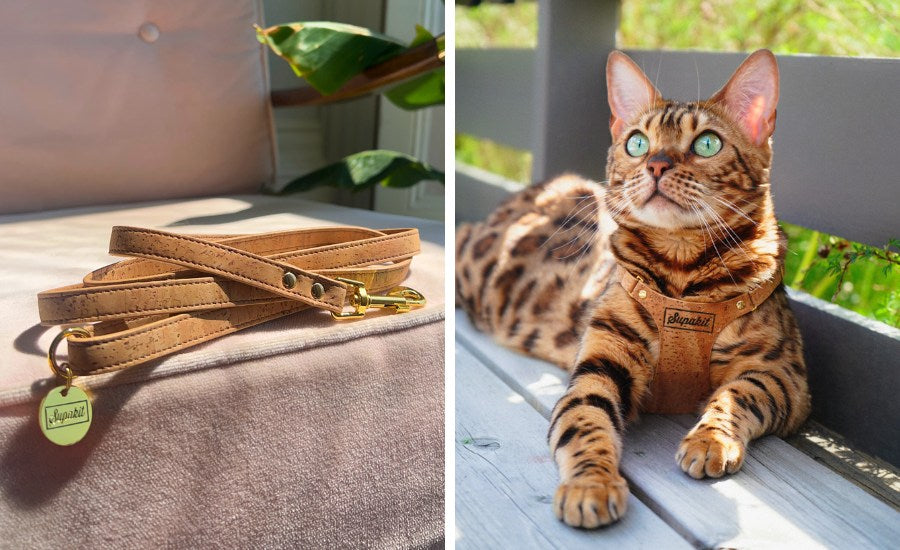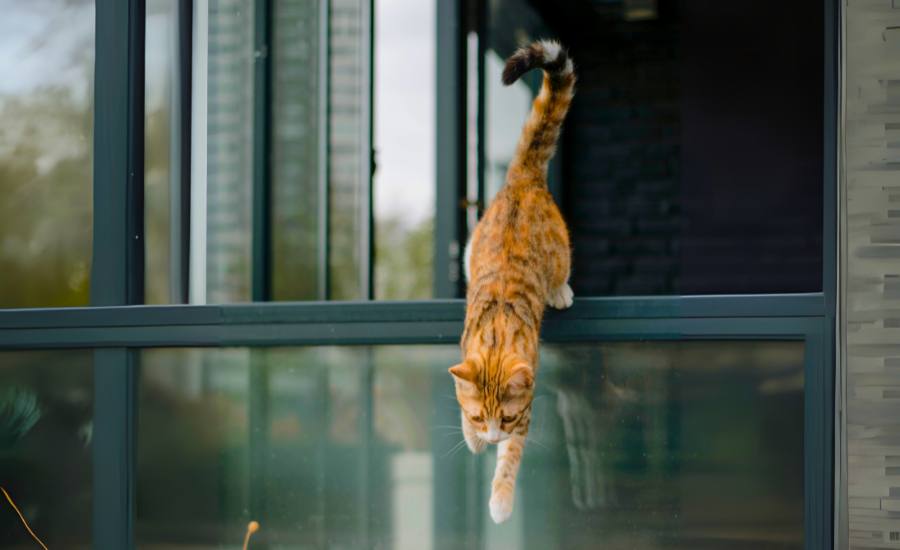Male vs Female Cats: Differences, Pros, and Cons
Bringing a new cat into your home is an important decision. Preparing to welcome your new feline family member is an exciting time filled with questions. One of the biggest choices to be made is whether to get a male or female cat.
Today, we are going to explore frequently asked questions about the differences between male and female cats. Read on to discover whether a male or female cat would be best for your family.
Neutered Male And Spayed Female Cats Both Make Great Pets
First, let's just define a few terms. In this article, we'll be discussing cats that have been neutered or spayed - in an operation known as a gonadectomy. Cats without this operation are referred to as 'intact', and they behave very differently. Intact cats still have the hormones that cause sexual characteristics and allow for reproduction.
Neutered male cats have had their testicles removed. They show less aggression, urinate less, and show fewer sexual behaviours (1). Intact male cats do not go into heat like female cats. So, if they are unneutered, they will seek sexual partners constantly.
Females that have been spayed are less aggressive and less stressed than unspayed female cats (2). They have had their ovaries and uterus removed, so won’t go into heat. This means they won’t yowl to attract male cats to your home.
Cats that have had gonadectomy operations are more affectionate toward humans (3). They are even less likely to suffer from certain diseases. As a result, neutered male and spayed female cats both make better pets than intact cats of either sex.
Are Male or Female Cats More Affectionate?

Popular opinion and anecdotal data (4) suggest that male cats are more affectionate and friendly. But, the natural behaviour of cats suggests that females are more likely to be affectionate.
While males live solitary lives prowling their territories, female cats have strong and enduring maternal instincts. They naturally live together when resources allow (5). As a group, they care for kittens in their colonies and are likely to stay by your side when you are unwell (6).
Research into the personality types of 196 cats compared character traits between male and female cats. They looked at factors such as friendliness, sociability, and independence. The results showed that sex was not a determining factor in cat personality (7).
The key factor for determining whether your cat will be affectionate is handling from an early age. If kittens are not handled and socialised with humans daily between 2 weeks and 7 weeks of age, they are unlikely to be friendly and affectionate (8). This is true even if they come from a genetic line of friendly cats. Friendliness is an inherited trait in cats (9), so if their father was friendly, the kitten is likely to be friendly.
So, if you want an affectionate cat, the choice between male or female is not very important. What is important is how well they were socialised with humans during the first 2 months of their life, and how friendly their parents are.
The breed of the cat also has a big influence on affection. Breeds like the ragdoll and the Persian cat were selected for their friendly temperament.
Are Female Cats More Aggressive Than Male?

Aggressive behaviour is not desirable in a pet cat. There are some preconceptions that female cats are more aggressive than male cats, which would make them less ideal as a family pet. But, a study on the behaviour of 120 house cats found no difference in aggressive behaviour between male or female cats (10).
The same study observed big differences in behaviour during the research. The results suggested that these were due to the individual temperaments of the cats. So, personality was more influential than the sex of the cat when it came to acting aggressively.
It is possible that the preconception that females are more aggressive is based on unspayed cats. Female cats that are in heat or protecting kittens are naturally much more defensive and likely to lash out toward anyone. But, equally, unneutered male cats are more likely to be more aggressive toward other cats. Whether male or female, ensuring your cat is safe while exploring outdoors is key. A breakaway cat collar or kitten collar is an excellent way to keep them safe without restricting their natural curiosity.
So, as long as your cat has been spayed, it is not more likely to be aggressive due to being female. Also, the likelihood of your cat being aggressive is influenced by their genetics and breed.
Having negative or a lack of early experiences with humans and other cats can certainly make a cat more fearful and aggressive. Further factors that can lead to increased aggression are early weaning (11) and the use of punishment by owners.
Are Male Cats Bigger?

Male cats tend to be a little bigger than female cats, even if they have been neutered early. Female cats reach their adult weight at 13 months of age, whereas male cats grow until 16 months old. Female cats require less energy than male cats (12) while they are growing, so they will require less food.
But, there is not a huge difference between the size of adult male and female cats. Both tend to be around 8 to 10 inches high. Stronger influences on the size of your cat are their breed and the quality of food that you give them. Also, if they were weaned too early or did not have adequate nutrition as youngsters, they may experience stunted growth.
Male cats do tend to have bigger faces, though. Testosterone causes rounding of the face, leading to that tell-tale tom-cat look, of puffy cheeks and large head. Male cats that are neutered late may retain this larger-headed appearance.
Are Female Cats More Colourful Than Male Cats?

Female cats can often have more interestingly coloured coats than male cats. This is because the orange colour in cats is controlled by the “X” chromosome. Female animals have the chromosome code “XX” while males have “XY”. As they have two “X” chromosomes, female cats can express interesting colour combinations with orange.
Tortoiseshell cats show two colours in a blotchy patchwork pattern, like the shell of a tortoise. These two colours are usually orange and black. There are many types of tortoiseshell including the popular calico, which also has white patches in addition to the orange and black.
In order to be a tortoiseshell cat, two “X” chromosomes must be present. So, almost all tortoiseshell and calico cats are female. But, you could be the lucky owner of a very rare, triple-chromosome male cat known as a Klinefelter. They carry the chromosome “XXY”, and can be calicos!
Regular male cats can be orange, as they do carry one “X” chromosome. But, they don’t express complex patterns of orange with other colours. Orange male cats are usually full orange tabbies.
Do Male Or Female Cats Get On Better With Other Cats?

If you already have a cat in your home, then choosing a new cat that will get on well with them is an important consideration. Fortunately, neutered and spayed cats are much more likely to get on well together than intact adult cats.
Generally, female cats tend to be more accepting of new cats into their home. They are more likely to accept another female cat than a male cat. When living wild, female domestic cats will form colonies if food is abundant enough to support them. They will live as a group with other females of their family, and share resources and responsibilities for raising kittens (5).
Male cats do not live in groups of males when left to their own devices in the wild. They roam their territories solitarily. On occasion, males will be accepted by one or more female colonies within their territory and may visit them frequently. But, they do not socialise positively with other intact males.
So, if you already have an existing cat of either sex, you are more likely to have success in introducing a new female. But, there is no guarantee that they will be friends.
Fortunately, male cats that are neutered early act much more like female cats than they do to intact male toms. So, it is possible for a neutered male and spayed female to live together in peace.
In the case of both sexes, cats are much more likely to get on well with another cat if they are raised together from a very young age. This is more important than the sex of the cat. The most ideal scenario is to bring littermates into your home. But, pairing unrelated young kittens together can also be very successful and create a well-bonded social pair.
Sometimes, it isn’t possible to adopt two bonded cats or littermates at the same time. In this case, ask about the cat’s past living scenario. Past socialisation is a positive indicator that a cat will get on well with other cats.
Also, genetics play a role in how friendly a cat will be toward other cats. All of these things can be more important than being male or female when it comes to the positive social skills of cats.
Male vs Female Cats Pros and Cons

Female cats are more likely to be smaller, and much more likely to have a tortoiseshell, calico, or torbie coat colour than a male cat. Female cats are also more likely to socialise well with other cats. According to anecdotal evidence, female cats may be less likely to be affectionate, or more likely to be aggressive. But, this stereotype is not well supported by scientific evidence. In reality, cats’ personalities can vary wildly.
Male cats are more likely to have tabby coats and are very unlikely to have the required chromosomes for a tortoiseshell or calico coat. Male cats are less likely to accept other cats into their household as adults. Male cats are likely to be larger, eat more, and keep growing for longer. Owners report that male cats are more likely to be affectionate and less likely to be aggressive.
But, the evidence suggests that sex is not a determining factor for personality type. Both male and female cats that have had gonadectomy operations can make excellent pets, and act similarly to one another. When choosing your new cat, the most important factors that will shape an ideal pet personality are:
- Not being weaned early.
- Being handled by humans before 7 weeks of age.
- Living with other cats for the first few months of their lives to learn social skills.
- Their breed and the typical temperament of that breed.
- Being treated gently and kindly in their loving home.
References
- Spain, C.V., Scarlett, J.M. and Houpt, K.A. (2004). Long-term risks and benefits of early-age gonadectomy in cats. Journal of the American Veterinary Medical Association, [online] 224(3), pp.372–379. Available at: https://avmajournals.avma.org/view/journals/javma/224/3/javma.2004.224.372.xml [Accessed 15 Mar. 2022].
- Finkler, H. and Terkel, J. (2010). Cortisol levels and aggression in neutered and intact free-roaming female cats living in urban social groups. Physiology & Behavior, [online] 99(3), pp.343–347. Available at: https://www.sciencedirect.com/science/article/abs/pii/S0031938409003746 [Accessed 15 Mar. 2022].
- McKenzie, B. (2010). Evaluating the benefits and risks of neutering dogs and cats. CAB Reviews: Perspectives in Agriculture, Veterinary Science, Nutrition and Natural Resources, 5(045).
- Turner, D. and Bateson, P. eds., (2013). The Domestic Cat. [online] Google Books. Available at: https://books.google.co.uk/books?hl=en&lr=&id=m-NRAgAAQBAJ&oi=fnd&pg=PA155&dq=female+cats+affectionate&ots=DQCsNyOyt9&sig=Zft08Et0eVuAVWR9bWff_LF9Fyg&redir_esc=y#v=onepage&q=female%20cats%20affectionate&f=false [Accessed 15 Mar. 2022].
- Bradshaw, J.W.S. (2016). Sociality in cats: A comparative review. Journal of Veterinary Behavior, [online] 11, pp.113–124. Available at: https://www.sciencedirect.com/science/article/abs/pii/S1558787815001549 [Accessed 15 Mar. 2022].
- brown (2022). How to Spot the Personality Differences Between Male and Female Cats. [online] Lombard Veterinary Hospital. Available at: https://www.lombardvet.com/services/cats/blog/how-spot-personality-differences-between-male-and-female-cats [Accessed 15 Mar. 2022].
- Lee, C.M., Ryan, J.J. and Kreiner, D.S. (2007). Personality in Domestic Cats. Psychological Reports, [online] 100(1), pp.27–29. Available at: https://journals.sagepub.com/doi/abs/10.2466/pr0.100.1.27-29 [Accessed 15 Mar. 2022].
- Denenberg, S. ed., (2021). Small Animal Veterinary Psychiatry. [online] Google Books. Available at: https://books.google.co.uk/books?hl=en&lr=&id=xWIREAAAQBAJ&oi=fnd&pg=PA66&dq=male+cats+friendly&ots=_Hizihdd9K&sig=j7LhzV1tRn2KyoLfCOzA--bghEc#v=onepage&q=male%20cats%20friendly&f=false [Accessed 15 Mar. 2022].
- McCune, S. (1995). The impact of paternity and early socialisation on the development of cats’ behaviour to people and novel objects. Applied Animal Behaviour Science, [online] 45(1-2), pp.109–124. Available at: https://www.sciencedirect.com/science/article/abs/pii/016815919500603P [Accessed 15 Mar. 2022].
- Barry, K.J. and Crowell-Davis, S.L. (1999). Gender differences in the social behavior of the neutered indoor-only domestic cat. Applied Animal Behaviour Science, [online] 64(3), pp.193–211. Available at: https://www.sciencedirect.com/science/article/abs/pii/S0168159199000301 [Accessed 15 Mar. 2022].
- Ahola, M.K., Vapalahti, K. and Lohi, H. (2017). Early weaning increases aggression and stereotypic behaviour in cats. Scientific Reports, [online] 7(1). Available at: https://www.ncbi.nlm.nih.gov/pmc/articles/PMC5583233/ [Accessed 15 Mar. 2022].
- Merenda, M.E.Z., Sato, J., Scheibel, S., Uemoto, A.T., Rossoni, D.F., dos Santos, M.P., Pereira, L.C., Ribeiro, L.B. and Vasconcellos, R.S. (2021). Growth Curve and Energy Intake in Male and Female Cats. Topics in Companion Animal Medicine, [online] 44, p.100518. Available at: https://www.sciencedirect.com/science/article/abs/pii/S1938973621000118 [Accessed 15 Mar. 2022].








